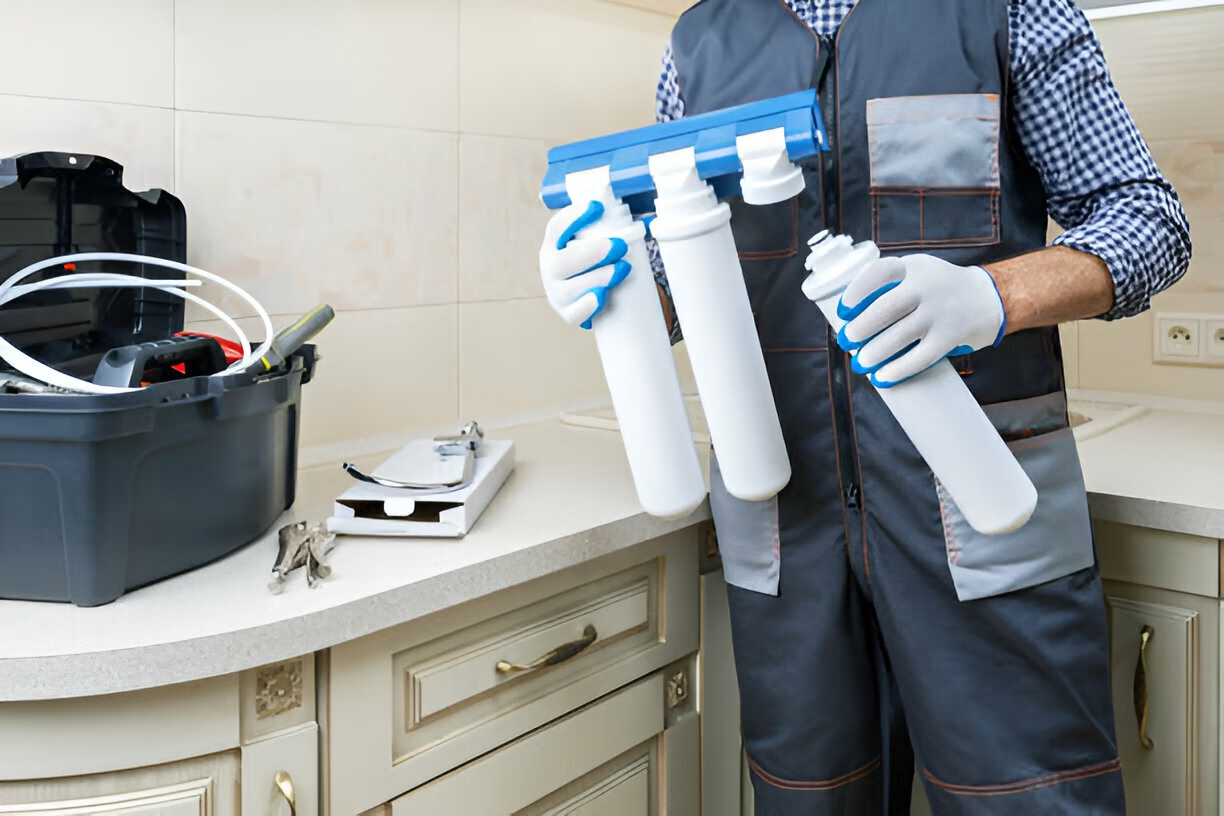Whole House Water Filter vs Water Softener: Discover pros, cons & expert tips to pick the perfect system for your family’s needs.
Table of Contents
1. Introduction
Water is key in every home. You use it for coffee, cooking, and clothes. But water can be different. Many homes have hard water. Hard water has minerals, which can harm pipes and machines. Some people worry about chlorine or dirt in water, which can change taste and health. This guide looks at two big home water systems. We compare whole-house water filters and water softeners. You will learn which fits your needs, money, and water goals.
You might need to read: How to Test Your Home’s Water Hardness
1. Recommended Water Softener
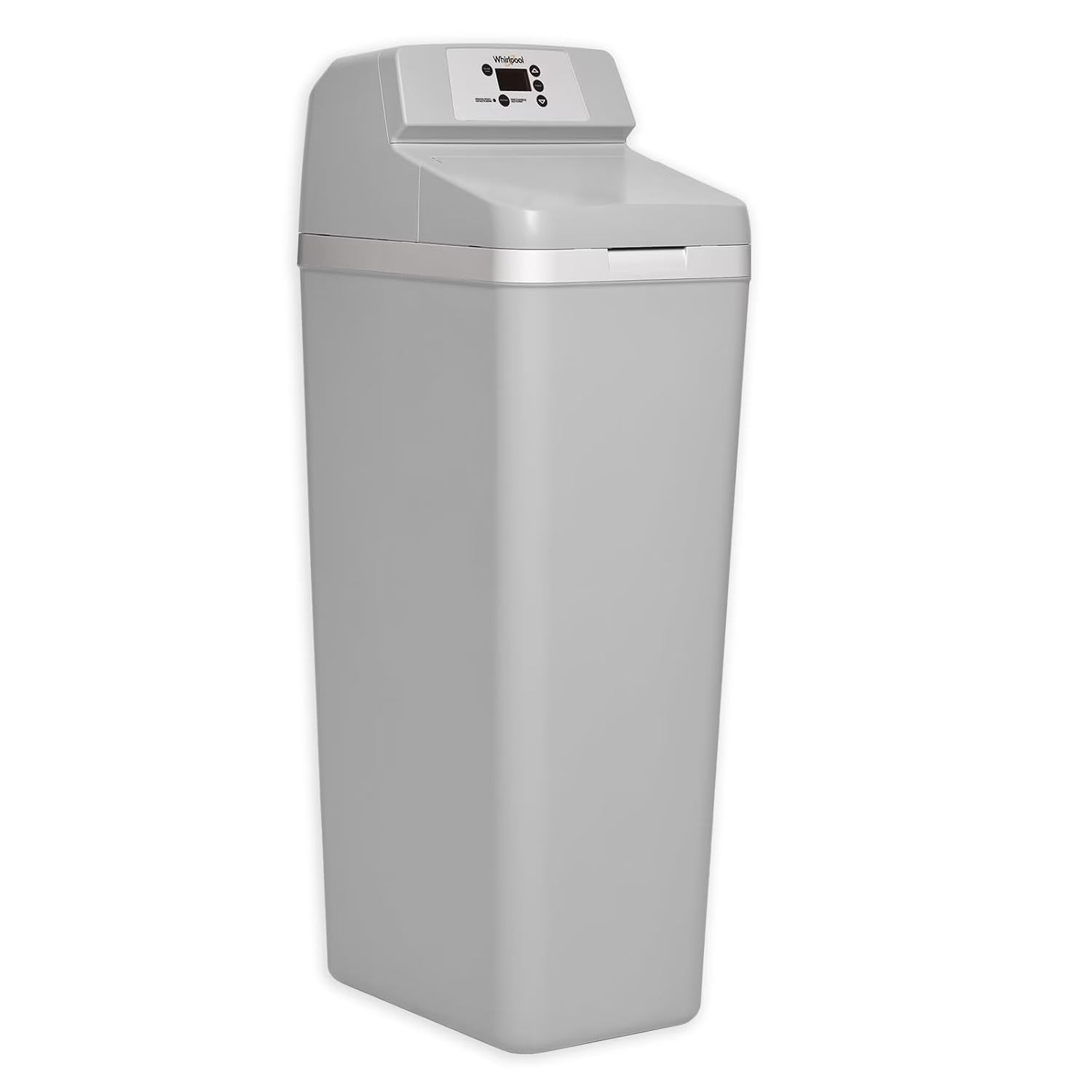
BEST VALUE
Whirlpool WHES30E Water Softener
CREDIT: Amazon
PROS
- Removes hard water minerals and iron
- Smart regeneration saves salt & water
- NSF certified performance
CONS
- Installation might require a plumber
- Relatively large footprint
2. Recommended Water Filter
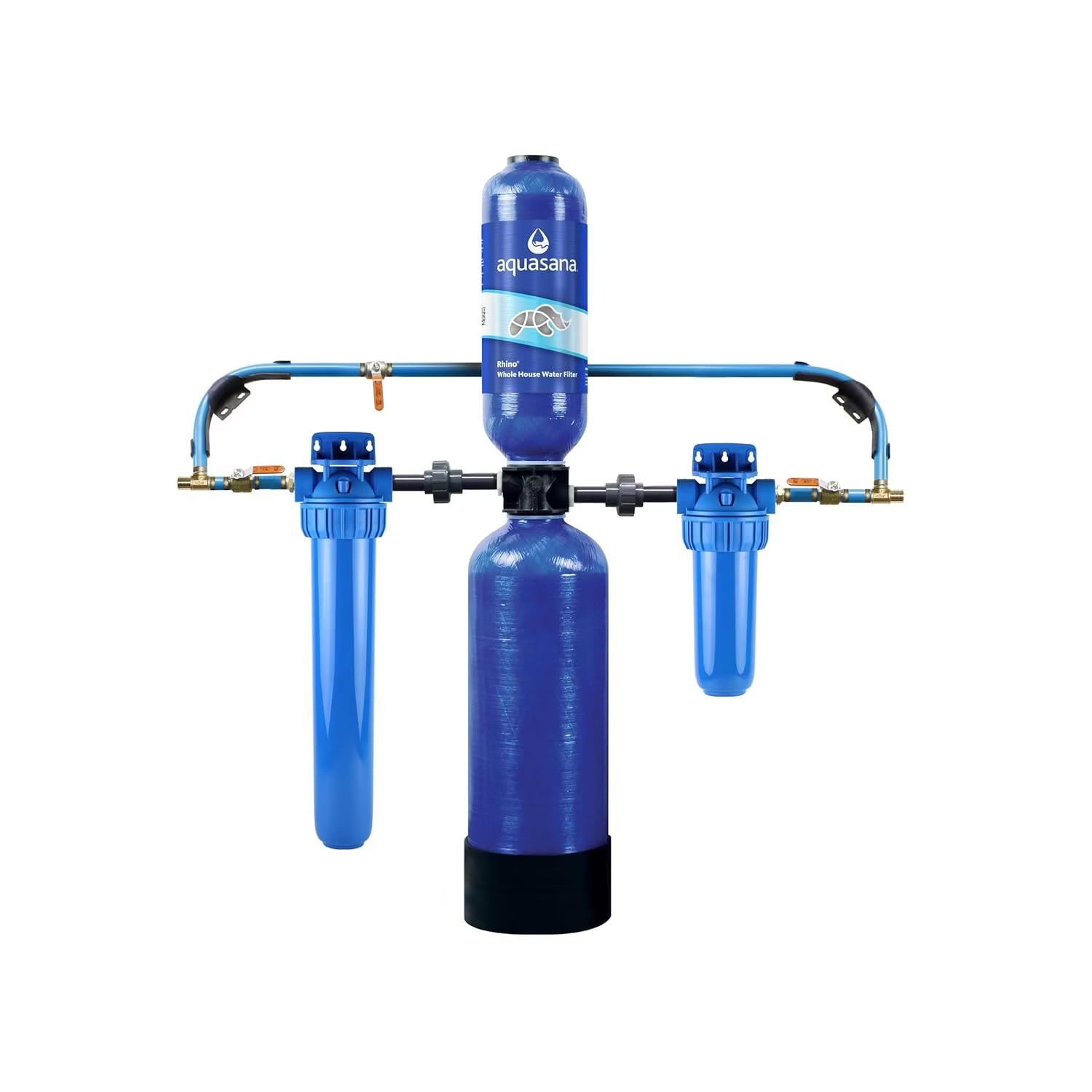
TOP PICK
Aquasana EQ-1000 Whole House Water Filter System
CREDIT: Aquasana / Amazon
PROS
- Filters up to 1,000,000 gallons of water
- Reduces chlorine, lead, and heavy metals
- Includes salt-free descaler and UV filter options
- No draining or backflushing required
CONS
- Initial installation can be complex
- Higher upfront cost compared to basic systems
Read Complete Review Here
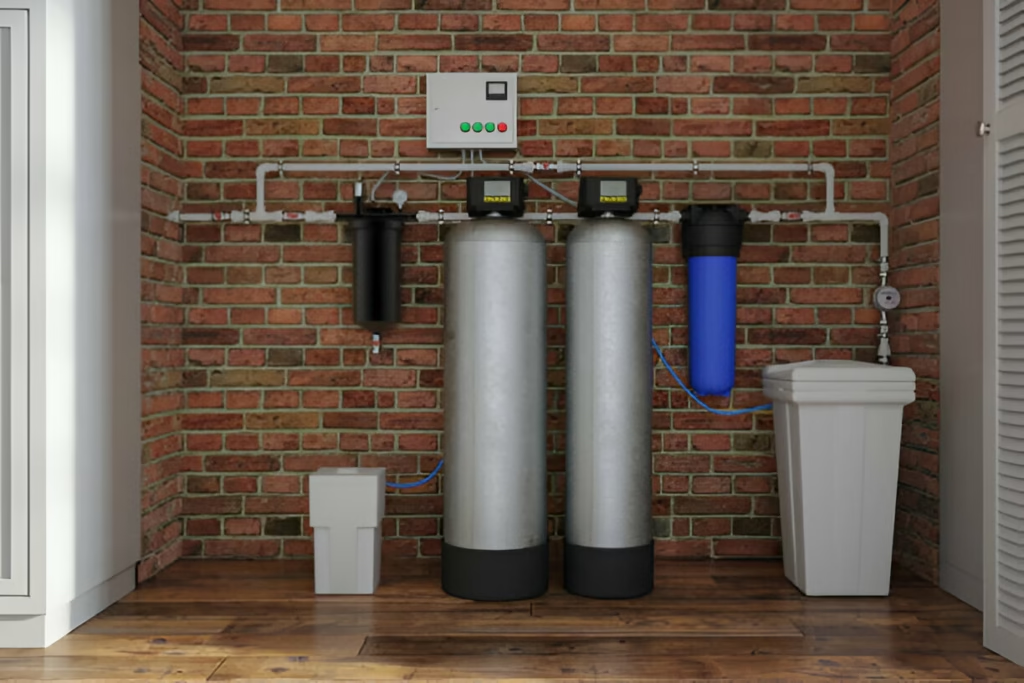
2. How Whole House Water Filters Work
A whole-house water filter cleans all water entering your home. You put it on the main water pipe. It removes dirt and bad stuff before water reaches your taps, machines, and showers.
- Cleaning Steps:
- First step catches sand, rust, and dirt (tiny bits).
- The next step uses carbon. It traps chlorine and harmful chemicals.
- Some filters have special parts. These target iron, bad smells, or metals.
- The last step makes the water clear and good-tasting.
- Water Flow: Enough water for families (5 to 15 gallons per minute).
- Filter Life: Change some parts every 6-12 months. Change special parts every 3-5 years. Your water changes how long they last.
Good Things:
- Makes water taste and smell better.
- Stops dirt from harming pipes and taps.
- Lowers chlorine and bad stuff all through the house.
Read Also: Is Your Home Suffering from Hard Water? 10 Warning Signs
3. How Whole House Water Softeners Work
A water softener fixes hard water. Hard water has calcium and magnesium. These make scale build-up.
- How it Softens:
- Hard water goes into a tank with tiny beads.
- The beads hold salt or potassium.
- The beads swap salt/potassium for the hard minerals (calcium, magnesium).
- Soft water comes out. The beads hold the hard stuff.
- Cleaning the Beads (Regeneration):
- When beads get full, the system cleans itself.
- It uses salty water from a salt tank.
- This puts new salt on the beads and washes the hard stuff away.
- Cleaning happens every 2–7 days. It depends on how much water you use and how hard it is.
- Size: Measured in grains (like 30,000–80,000). This shows how much hard stuff it can take before cleaning.
Good Things:
- It helps machines last longer (like hot water tanks, dish washers, and clothes washers).
- Stops scale on pipes, taps, and shower heads.
- It makes skin feel softer, makes clothes fluffier, and uses less soap.
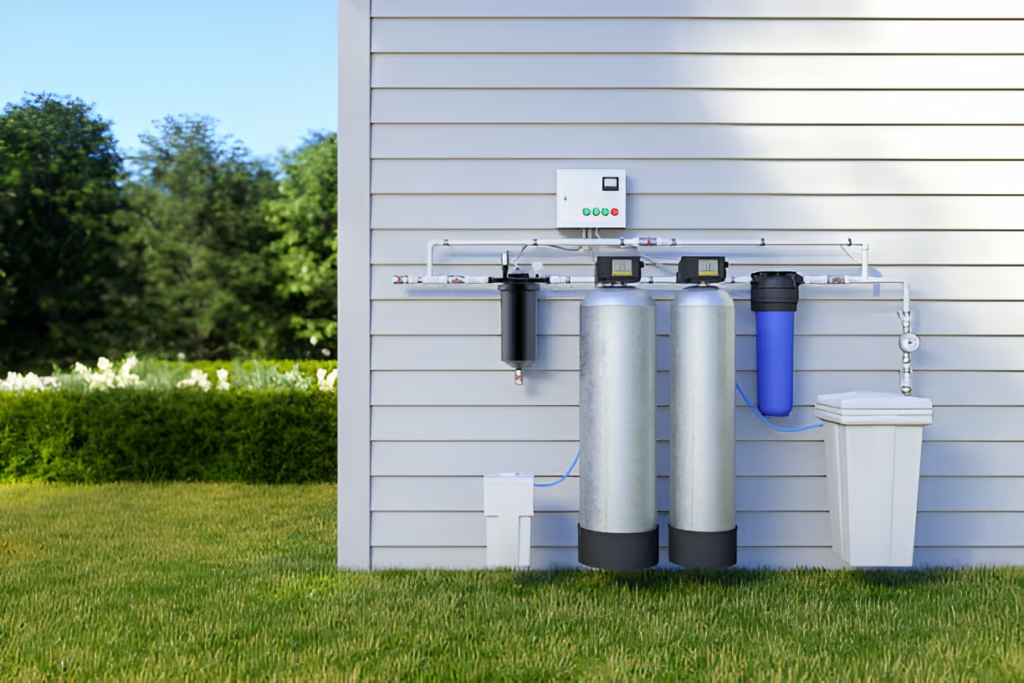
4. Key Differences: Filter vs. Softener
4.1 Main Job
- Filter: Takes out bad stuff from water. This includes dirt, chlorine, chemicals, and harmful metals.
- Softener: Takes out minerals that make water hard. These are calcium and magnesium.
4.2 Technology & Media
| Feature | Filter | Softener |
|---|---|---|
| Media Types | Sediment, carbon, specialty media | Ion-exchange resin |
| Regeneration | Replace filter cartridges | Brine regeneration cycle |
| Waste Water | Minimal (filter backwash if applicable) | 20–80 gallons per regeneration cycle |
4.3 What They Remove
- Filters: Remove chlorine, a chemical called chloramine, other chemicals (VOCs), iron, dirt, harmful metals (like lead, mercury), and some germs (if using a special light).
- Softener: Remove only calcium and magnesium minerals.
4.4 Care Needed
- Filters: Change the inside parts every 6 to 12 months. If it has a backwash setting, use that sometimes.
- Softener: Add salt every month, clean the saltwater tank once a year, and replace the primary soft material inside every 10 to 15 years.
4.5 Size and Setup
- Filter: One tank or a few small parts together. Takes up little space (1-2 square feet).
- Softener: Two tanks (one for soft material, one for salt). Takes up more space (3-4 square feet). Needs a drain pipe and power.
4.6 Operational Costs
| System | Upfront Cost | Annual Maintenance Cost |
|---|---|---|
| Whole House Filter | $800–$1,500 | $100–$300 (filter media) |
| Water Softener (30k grains) | $900–$1,200 | $150–$300 (salt/brine) |
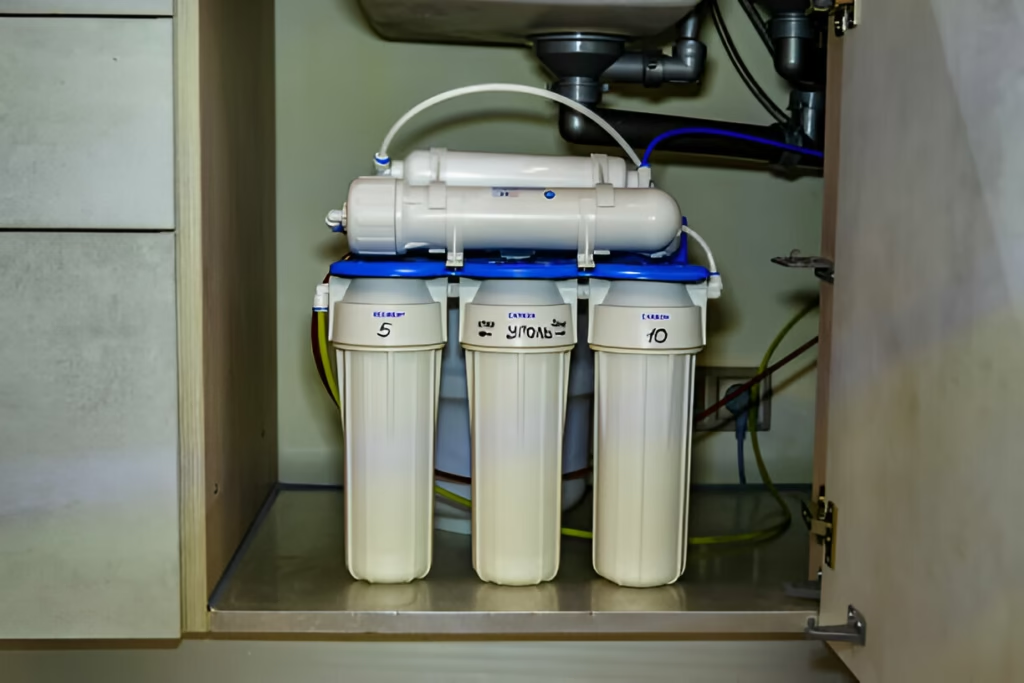
5. When to Choose a Whole House Water Filter
- Your city water tastes or smells like chlorine.
- You see dirt, rust, or color in your tap water.
- You worry about chemicals, lead, or other bad stuff in the water.
- You want clean water at every sink and shower.
- Your water is not hard (less than 7 grains).
Best for:
- Old homes with old pipes (lead, rust).
- People with wells worried about iron, bad smells, or germs (add a special light).
- Families who care about health and want cleaner water.
6. When to Choose a Water Softener
- Your home water is hard (over 7 grains).
- You see white crust on faucets or appliances.
- Your heat bills are high because crust coats your water heater.
- Your skin feels dry, your hair feels brittle, or your dishes have a white film.
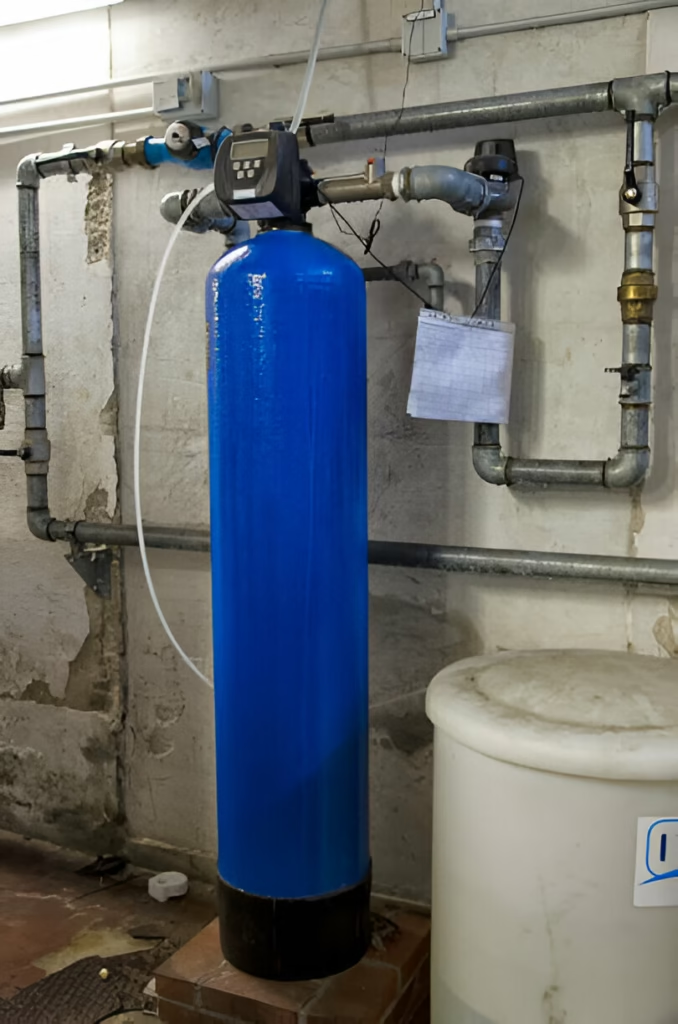
Best for:
- Places with hard water (common in many US areas).
- Homes using dishwashers and clothes washers a lot.
- Anyone who wants to use less soap and make appliances last longer.
7. Combined Systems: Filter + Softener
Homes with dirty water AND hard water need both. A two-part system works best:
- First, a filter: Takes out dirt and rust.
- Then, a softener Takes out the hardness (makes water soft).
- Finally, another filter: Makes water taste and smell good.
Why use both?
- Fixes all water problems.
- Stops the crust from hurting the filters.
- Gives you clean, soft water everywhere.
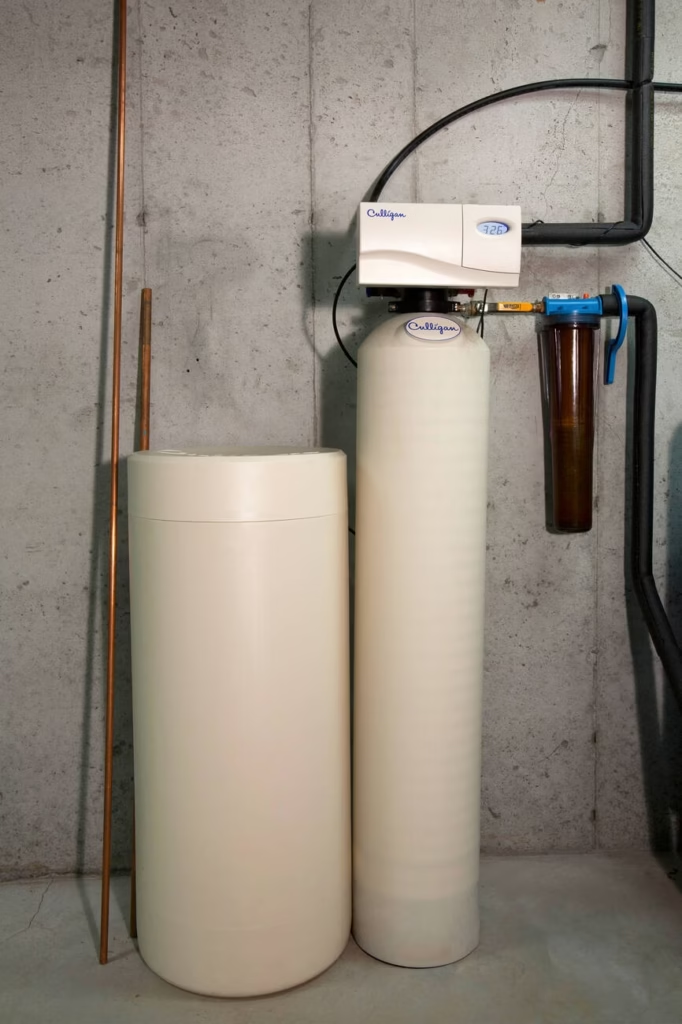
8. Top Brands & Models Comparison
| Brand & Model | Type | Capacity / Flow | Price Range | Key Feature |
|---|---|---|---|---|
| Whirlpool WHES30E | Softener | 30,000 grains | $900–$1,000 | Salt & Water Saving Technology |
| Aquasana EQ-1000 | Filter | 7 years / 1,000,000 gal | $1,200 | 4-stage Claryum® filtration |
| Pelican NaturSoft | Softener + Filter | 32,000 grains + 6 GPM | $1,300 | Salt-free softening + carbon filtration |
| iSpring WGB32B-PB | Filter | 10 GPM | $800 | 3-stage with iron and lead removal |
| Culligan High-Efficiency | Softener | 48,000 grains | $1,100 | Smart regeneration based on usage |
You might be interested: Complete iSpring Water Filter Review
9. Installation & Care Guide
1. Check Your Water First
- Test how hard your water is.
- Check for bad stuff in your water.
- Use a home test kit or send water to a lab.
2. Get Your Pipes Ready
- You will need to reach the main water pipe.
- You will need a drain nearby.
- You will need a power plug nearby.
3. Putting It In
- Turn off the main water.
- Put the unit where the maker says to put it.
- Hook up the water in pipe and water out pipe.
- For softeners, hook up the drain line and overflow.
- Clean it well before using it for the first time. Run the clean cycle.
4. Keeping It Working Right
- Filters: Change them on time.
- Softener Salt: Add salt each month. Keep the salt tank clean, okay?
- Yearly Clean: Once a year, deep clean the softener tank, salt tank, and pipes.
For complete guide: See here.
For proper maintenance guide, See Here.
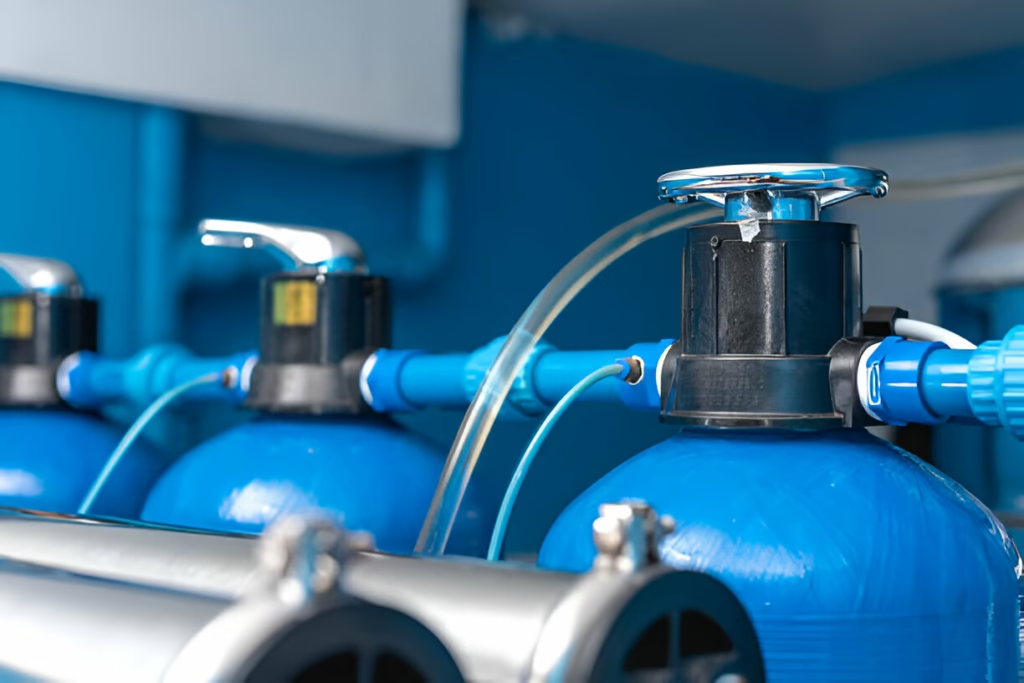
10. Cost Analysis & ROI
| Cost Component | 1st Year Cost | 5-Year Cost (est.) |
|---|---|---|
| Whole House Filter | $1,200 | $2,000 |
| Water Softener (30k) | $1,000 | $2,250 |
| Combined System | $2,200 | $3,500 |
| Annual Savings | ||
| Appliance Repairs | $200 | $1,000 |
| Energy Efficiency | $120 | $600 |
| Soap & Detergent | $80 | $400 |
| Net 5-Year Savings | $1,500–$2,000 |
11. Frequently Asked Questions (FAQs)
- Can I put in a filter myself?
- Yes, if you know basic plumbing. But softeners usually need a pro for the warranty.
- Do salt-free softeners work?
- They change how hard minerals form (using crystals) but don’t take them out.
- Can a filter remove bacteria?
- Only if it has special UV light or very tiny filters.
- How often should the softener clean itself?
- Usually every 2–7 days. It depends on how hard your water is and how much you use.
Also Read: Best Whole House Water Filter for Well Water — Complete Guide
12. Conclusion & Next Steps
Pick the right system for your water problems.
Need to fix chlorine, dirt, or chemicals? Get a whole-house filter.
Fighting hard water scale? Get a water softener. It helps pipes and machines.
For complete protection, think about using both systems together.
What to Do Next:
- Test your water for hardness and bad stuff.
- Look at Top Brands & Models table to compare.
- See if your area offers rebates or payment plans to help pay for putting it in.
- Get it installed. Then enjoy cleaner, softer water in every tap!
Related Keywords:
- whole house water filter vs water softener
- whole house water filter system vs water softener
- water softener vs whole house filter
- can a whole house water filter replace a water softener
- does a whole house water filtration system soften water
- whole house water filtration vs water softener
- whole house water filter before or after water softener
- whole house water filter after water softener
- whole house water filter vs softener
- best whole house water filter and water softener
- whole house well water filter system and water softener bundle
- difference between whole house water filter and water softener
- whole house water filter before water softener
- will a whole house filter soften water
- best whole house water filter and softener system
- best whole house water filter and softener
- whole house water filter and softener combo
- whole house water filter and softener combo cost
- whole house water filter and softener combo uk
- whole house water filter and softener cost
- whole house water filter and softener combo consumer reports
- whole house water filter and softener combo installation
- whole house water filter and softener combo reviews
- whole house water filter and softener combo installation cost
- whole house water filter and softener costco
- whole house water filter and softener combo uk reviews
- whole house water filter and softener diagram
- whole house water filter and softener home depot
- what is the difference between water filtration and water softener
- difference between whole house filtration and water softener
- whole house water softener vs filter
- whole house filter vs water softener
- whole house water filter and softener for well water
- whole house water filter and softener for city water
- whole house water filter and salt free softener combo
- whole house water filter for water softener
- ge whole house water filter comparison
- ge whole house water filtration system reviews
- ge whole house water filter reviews
- ge whole house water softener
- hardless ng3 whole house water filter and water conditioner
- whole house water softener vs hot water only
- whole house water filter and softener installation
- whole house water filter and softener installation cost
- is whole house water filter worth it
- whole house water filter and softener lowes
- whole house water filter and softener near me
- whole house water filtration system vs water softener
- whole house water filter and softener nearby
- whole house water filter and softener no salt
- whole house water filter or water softener
- whole house water filter or softener
- whole house water filter and softener price
- whole house water filter plus water softener
- whole house water filter vs water softener reddit
- whole house water filter and softener reviews
- whole house water filter and softener reddit
- whole home water filter and softener reddit
- best whole house water filter and softener reddit
- are whole house water filters worth it
- whole house water filter and water softener system
- whole house water filter and softener system reviews
- whole house water filter and softener salt free
- whole house water filter and softener sale
- whole house water filter and softener system cost
- whole home water filtration and softener system
- whole home water filtration and softener system cost
- whole house well water filter and softener system
- whole house water filter and softener uk
- whole house water filter versus water softener
- whole house water filter with water softener
- whole house water filtration with water softener
- best whole house water filter and softener combo
- water softener vs. whole house filtration system
- best whole house water softener filtration system
- best whole house water filtration and softener

